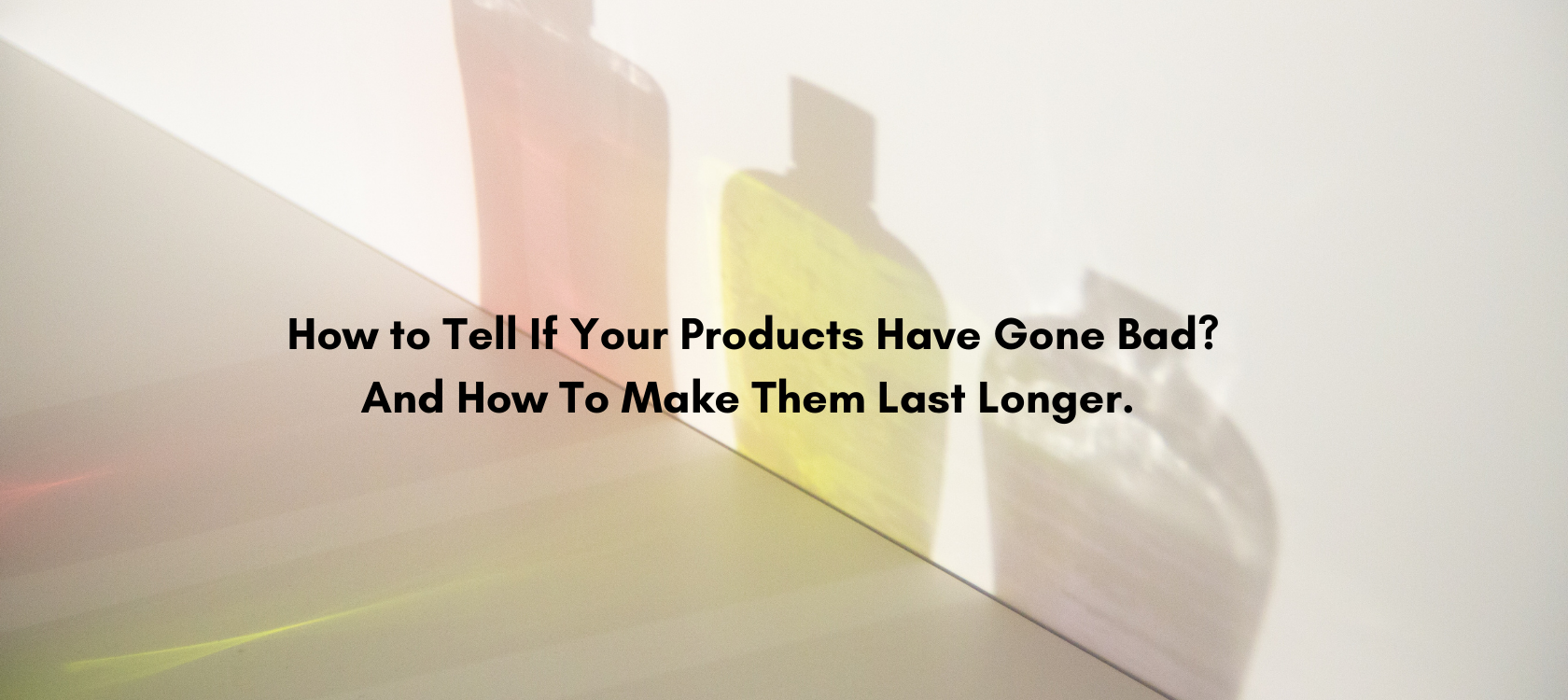
How To Tell If Your Products Have Gone Bad and What You Can Do To Make Them Last Longer
Beauty products can be expensive and we all want to make sure we’re getting our money’s worth. But if your product is old or has gone bad, it’s not doing us any favors. Sometimes, it’s best to invest in a new product and cut your losses. After all, old products can do harm and it isn’t worth it especially with cosmetics and products that go on our delicate facial skin. But how do we know when products have gone bad? It’s long been rumored that expiration dates are conservative estimates as to when the product should be disposed of but is it really bad? Here we’ll share the key things to look for to identify whether your product needs to be renewed or if you can squeeze out a few more drops AND what you can do to make them last longer.
1. Smell
Smell is the easiest way to tell whether or not your product has gone bad. Whether it’s skincare, cosmetics, shampoo, body soap, hair styling products, etc. a rancid smell means some ingredient(s) has turned and it’s time to get a new one. But, even if it smells different, it’s also a cause for suspicion to check the remaining identifiers listed below.
2. It's dry or harder
Oftentimes, especially with hair styling products like styling creams, waxes, and pastes will dry up or harden and separate from the container they are stored in.
3. Color Change
If everything checks out as far as smell and the products texture, another key thing to look for is color. Has the color changed? Oxygen from the product being opened repeatedly over time may cause it to turn yellow, green, darker or simply a different color in general.
4. Product separates
If the product looks different because the ingredients have separated, it’s not as simple as mixing the product again to return it to normal. Once the product has separated, it likely will no longer be effective as it once was and stirring it or shaking it to combine everything together will simply mix the product together but not COMBINE them as they were formulated to be. In other words, once you use it perhaps in your hair or on your skin, there’s nothing preventing it from separating again, but this time it’s on your body.
5. Different Texture
After repeated use, we all know how our beauty products are supposed to feel. From the thickness or viscosity of the product, to its texture. If your product has turned thick, grainy, or chunky, or simply changed, it’s a good sign to dispose of it and get a new one.
6. It’s Past the Expiration or PAO Date
Over the counter drug ingredients like sunscreen, some acne ingredients, etc. are required to have expiration dates on the product’s packaging. It will be clearly labeled with a date when the product has expired but other products don’t clearly have this. The FDA does not require cosmetics, shampoos, conditioners, etc. to have an expiration product so instead you may see a “period after opening” (PAO) label on the packaging.

With all these tips in mind, it stlil can be difficult to fight that urge to just squeeze that extra use of product out for that one last time before getting a new one BUT if your product falls into any of the categories above, you know something is off. Not only could your product be full of bacteria and cause all kinds of skin issues, an old product can also be not as effective as it once was leading you to waste more product in the end. Particularly, sunscreen, vitamin C, and AHA/BHA are ingredients you do not want to test the waters with.
To make your products last longer, try storing them outside of your shower. Whatever products are not essential to being used in the shower, place outside and make sure it is closed tight in a cool dry place. There is too much temperature change and humidity in your shower causing your product to constantly change. All that moisture is also the perfect breeding ground for bacteria to grow so make sure when you’re showering to use your ceiling fan or open a window.
The next tip is rather obvious but it’s to never store your products in direct sunlight. Sunlight primarily affects products by separating the ingredients due to UVA and UVB rays. Over time, constant sunlight will slowly change the products' consistency, color, and texture. On top of that, depending on how long the product is in direct sunlight and how hot, the sun may even break down the product’s packaging and release chemicals into the product.

Leave a comment